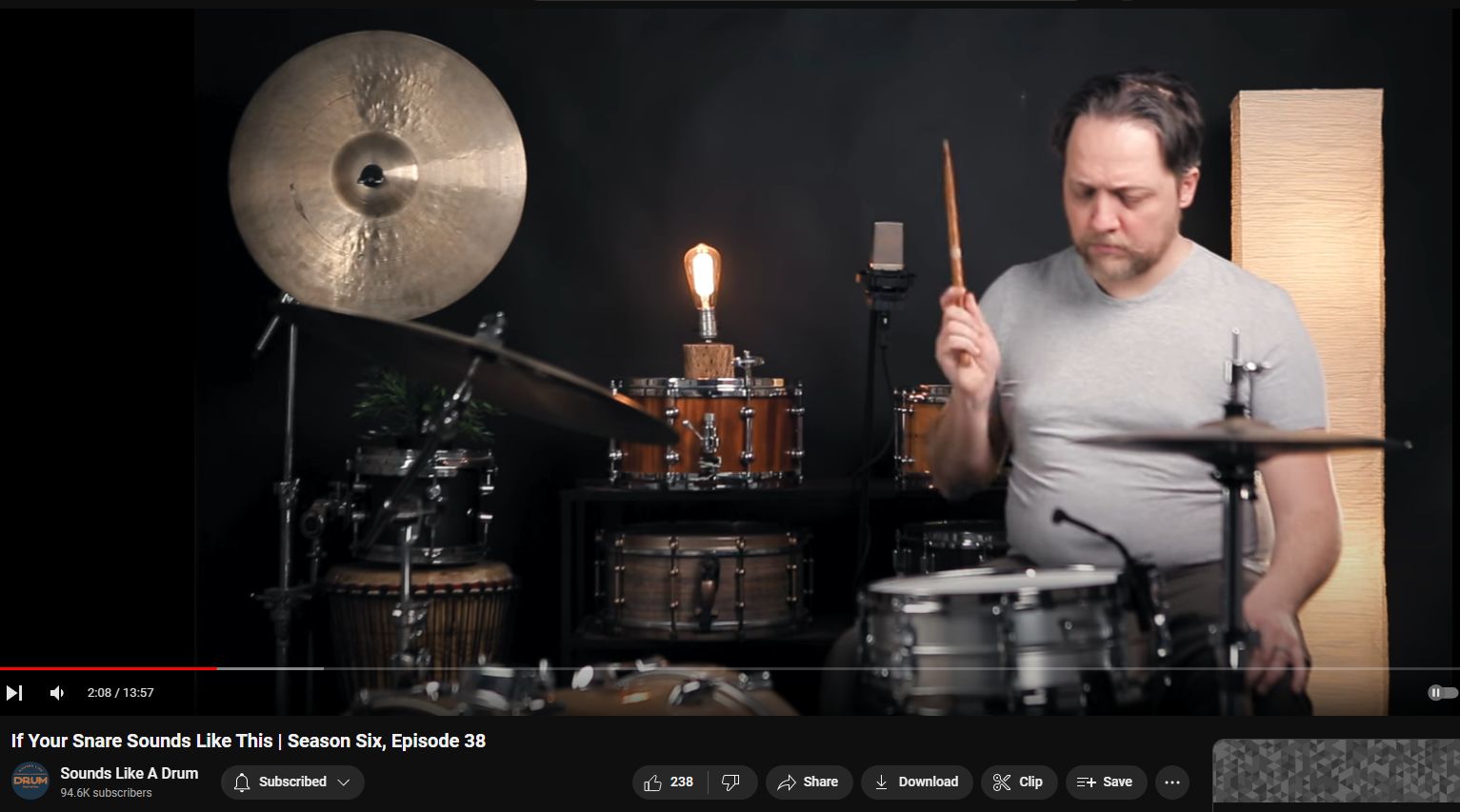Unchoking the Snare Drum
Sound opens up (and changes) with increasing volume.
Tang, ring, no overpowering overtones but an airiness.
A “choked” drum sound typically refers to a drum sound that lacks resonance and sustain, often resulting from a combination of factors such as tight tuning, muted playing technique, or the use of dampening devices or techniques. This term is commonly used in drumming and music production contexts to describe a drum sound that is short, dry, and lacks the characteristic sustain and resonance associated with the drum.

Here are some common reasons why a drum sound might be described as “choked”:
1. Tight Tuning: When a drum is tuned tightly, it tends to produce a shorter, more focused sound with less sustain. This can create a “choked” sound, particularly if the drumhead is tensioned to the point where it does not vibrate freely.
2. Muted Playing Technique: Drummers may intentionally use muted playing techniques, such as playing with brushes or rods instead of sticks, or using their hands to dampen the drumhead immediately after striking it. These techniques can produce a shorter, more controlled sound that is often described as “choked.”
3. Dampening Devices: Drummers may use various dampening devices or techniques to control the resonance of their drums. This can include placing foam or gel pads on the drumhead, using external dampeners like moon gels, or even placing towels or clothing inside the drum shell to absorb excess vibrations. While these dampening methods can help achieve a specific sound or reduce unwanted overtones, they can also contribute to a “choked” sound by reducing the drum’s natural resonance.
4. Mixing and Processing: In music production, engineers may apply additional processing to achieve a “choked” drum sound. This can include the use of equalization (EQ) to roll off low frequencies and emphasize the attack of the drum, as well as the use of compression to control the dynamic range and sustain of the drum sound.
Overall, a “choked” drum sound is characterized by its short, dry, and controlled nature, often resulting from intentional tuning, playing, or processing choices made by the drummer or engineer. While it may not be suitable for all musical contexts, a choked drum sound can add a unique texture and character to a mix when used appropriately.